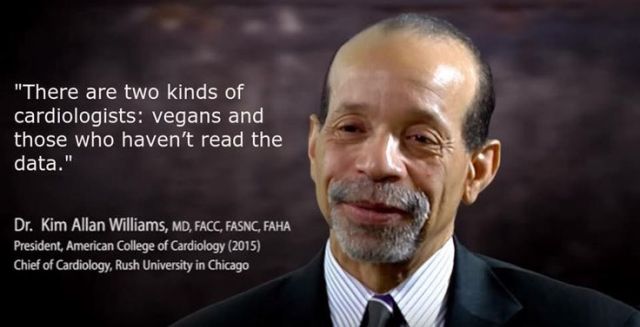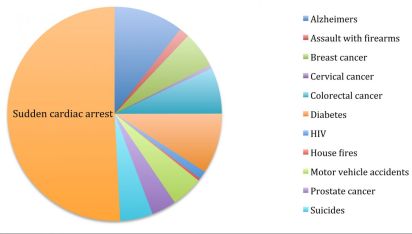This is my second post on cholesterol.
I’ll link my previous post about the basics of cholesterol here.
In this post I’ll cover cholesterol in more depth, including the important of ratios, total cholesterol, and more.
The last post included the more widely recognized cholesterol numbers as they relate to risk factors for atherosclerosis, an indicator for coronary heart disease (CHD). The Editor and Chief of the American College of Cardiology said over a decade ago that he recommends an upper total cholesterol of 150 mg/dl or 60 mg/dl of LDL Cholesterol (average vegan) and that all other factors aren’t as a accurate of predictor of CHD as total cholesterol.
What’s the importance of HDL Cholesterol as it relates to LDL Cholesterol?
Well High Density Lipoprotein (HDL) Cholesterol is thought to be the “good” cholesterol. This is because while HDL and Low-Density Lipoproteins (LDL), “bad” have a relationship, HDL acts as a cleaner by moving through blood vessels and sticking to the LDL and carrying them out of the body.
You may have heard that in the past, but even this has hidden truth. That is, while HDL is better it is not necessarily “good” because even it acts to increase the risk factor of developing atherosclerosis. You see, there are many different sizes of the HDL and LDL Cholesterol. Larger soft LDL is thought to be better because it is more easily transported by HDL, while this may be true, with a more in-depth look at the science, soft LDL increases CHD risk by %44 compared to 63% of the small dense LDL Cholesterol. As for HDL, well even it increases CHD risk by up %54.
Me? I want zero risk personally.
The Optimal Ratio of HDL to Total Cholesterol
One predictor used to measure CHD risk is the ratio of HDL to total cholesterol. This is thought to be a better predictor of CHD risk factor than HDL/LDL cholesterol ratio. The recommended minimum ratio of HDL total cholesterol is below 5, optimal being below 3.5 according to the American Heart Association who aren’t known for their strict guidelines.
What’s the Best Predictor of CHD?
There are a couple other suggested tools for predicting your risk factors of CHD. Along with cholesterol as a tool, triglyceride levels are commonly used, and a test to review your C-reactive protein are all useful indicators of your bodies level of overall internal health. C-reactive protein gives you an indicator of the overall inflammation in your body and the triglycerides tells you how much free flowing fat there is in your blood stream.
The two best tools that require short test from you doctor are you total cholesterol levels and the ratio of total to HDL cholesterol.
Optimally, a cholesterol level below 150 mg/dl and a total to HDL cholesterol ratio of below 3.5 are our best known guarantee to make you heart attack proof. The reason both should be used together as predictors of CHD risk is because even HDL cholesterol isn’t harmless and as your total cholesterol rises it’s impossible to escape declining heard disease risk, even if your ratios are optimal.
Cholesterol is Important
Our bodies make all the cholesterol we need. It serves important roles in the body; creating hormones is the commonly known one. When we don’t eat cholesterol we still have some in our bodies and this is the same for when we are born at birth as is for our fellow primates too. Though cholesterol is important it’s good to remember that the worlds #1 killer around is coronary heart disease and the #1 predictor of heart disease is atherosclerosis a cause of cholesterol.
Thank You
Choose foods without any cholesterol. It so happens that plants don’t contain cholesterol and the only “food” that has cholesterol is animal products.
The top food groups are:
- Fruits
- Vegetables
- Starches – Potatoes, whole, and sprouted grains
- Legumes
- Nuts & Seeds
- No oil
- Lots of water
I hope this information finds you well and if it doesn’t consider talking to your doctor to get checked with a simple blood test.
Please like, share, and subscribe!
Thank You!
Carson McQuarrie

nutritionfacts.org/video/does-cholesterol-size-matter/
nutritionfacts.org/video/cholesterol-crystals-may-tear-though-our-artery-lining/
nutritionfacts.org/video/optimal-cholesterol-level/
nutritionfacts.org/video/heart-attacks-and-cholesterol-dying-under-normal-circumstances/
nutritionfacts.org/video/heart-attacks-and-cholesterol-purely-a-question-of-diet/
http://www.ajconline.org/article/S0002-9149(10)01954-5/abstract
http://www.ncbi.nlm.nih.gov/pmc/articles/PMC2747394/
http://www.webmd.com/cholesterol-management/finding-the-ideal-cholesterol-ratio?page=2
http://www.healthline.com/health-slideshow/cholesterol-ratio#2
http://www.health.harvard.edu/heart-health/making-sense-of-cholesterol-tests
archinte.jamanetwork.com/article.aspx?articleid=752318




 transport blood. This can lead to sudden cardiac death and in the US its the #1 leading cause of death for males over 40. At an alarming number of 326,200 deaths a year from sudden cardiac arrest equates to roughly the same number of deaths from breast cancer, prostate cancer, diabetes, suicide, cervical cancer, colorectal cancer, HIV, motor vehicle accidents, and more, combined!
transport blood. This can lead to sudden cardiac death and in the US its the #1 leading cause of death for males over 40. At an alarming number of 326,200 deaths a year from sudden cardiac arrest equates to roughly the same number of deaths from breast cancer, prostate cancer, diabetes, suicide, cervical cancer, colorectal cancer, HIV, motor vehicle accidents, and more, combined!